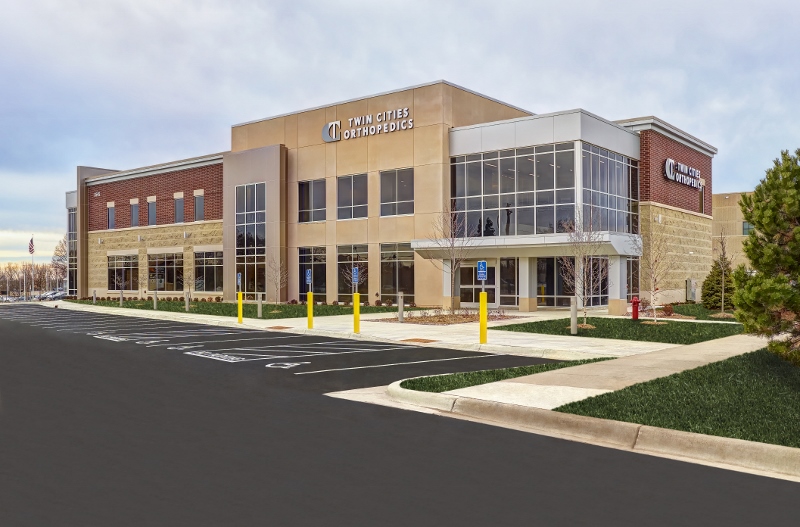The project consisted of an approximate 20,000 square foot medical office building. BKBM provided both civil and structural engineering services for the project.
Project Overview:
BKBM partnered with Sperides Reiners Architects, Inc. to deliver full structural and civil engineering for a new two-story, 20,000-square-foot steel-framed medical office building—the final parcel in the Vadnais Heights Ice Arena master plan. The project’s scope spanned efficient site development and innovative building detailing, all while maintaining high standards for durability, usability, and constructibility.
Structural Solutions:
- Modern Framing: The building features composite deck on steel floors and steel roof decking on joists and beams, supported by conventional spread footings and non-loadbearing exterior walls.
- Seismic & Wind Resistance: Masonry elevator and stair cores serve as the lateral system, delivering stability while maximizing floorplan flexibility.
- Architectural Integration: The main entry includes a cantilevered canopy, independently supported. Rooftop mechanical units are enclosed by precast panel screens that match the building exterior, with select panels detailed for removability—streamlining future maintenance.
- Constructibility Focus: Large roof screens and parapets required unique, efficient roof framing that preserved the building’s architectural intent. Non-stacking brick-clad openings were supported with thermally-isolated steel lintels, ensuring both performance and energy efficiency.
- Specialized Needs: Portions of the second floor were evaluated and reinforced for X-ray equipment loads and vibration. Structural solutions also included impact wall design for the physical therapy suite.
Civil Engineering & Site Design:
- Complete Site Development: The project included new parking, sidewalks, and full utility services—storm sewer, sanitary, and water.
- Stormwater Management: As the final site within a master plan, the design routed runoff through an underground stormwater filtration tank constructed of 24” pipes. This system replaced a former on-site bio-filtration basin and met new storage and water quality control requirements, using a sand base for filtration before discharge to municipal sewers.
- Stakeholder Coordination: The design process involved coordinated approvals with city, county, and watershed agencies, ensuring compliance with all regulatory and environmental requirements.
Results:
The Vadnais Heights Medical Office project demonstrates BKBM’s commitment to integrated civil and structural engineering. Through innovative framing, efficient site utilities, and responsive stormwater solutions, this building now serves the community with a focus on long-term resilience, user comfort, and sustainability.


